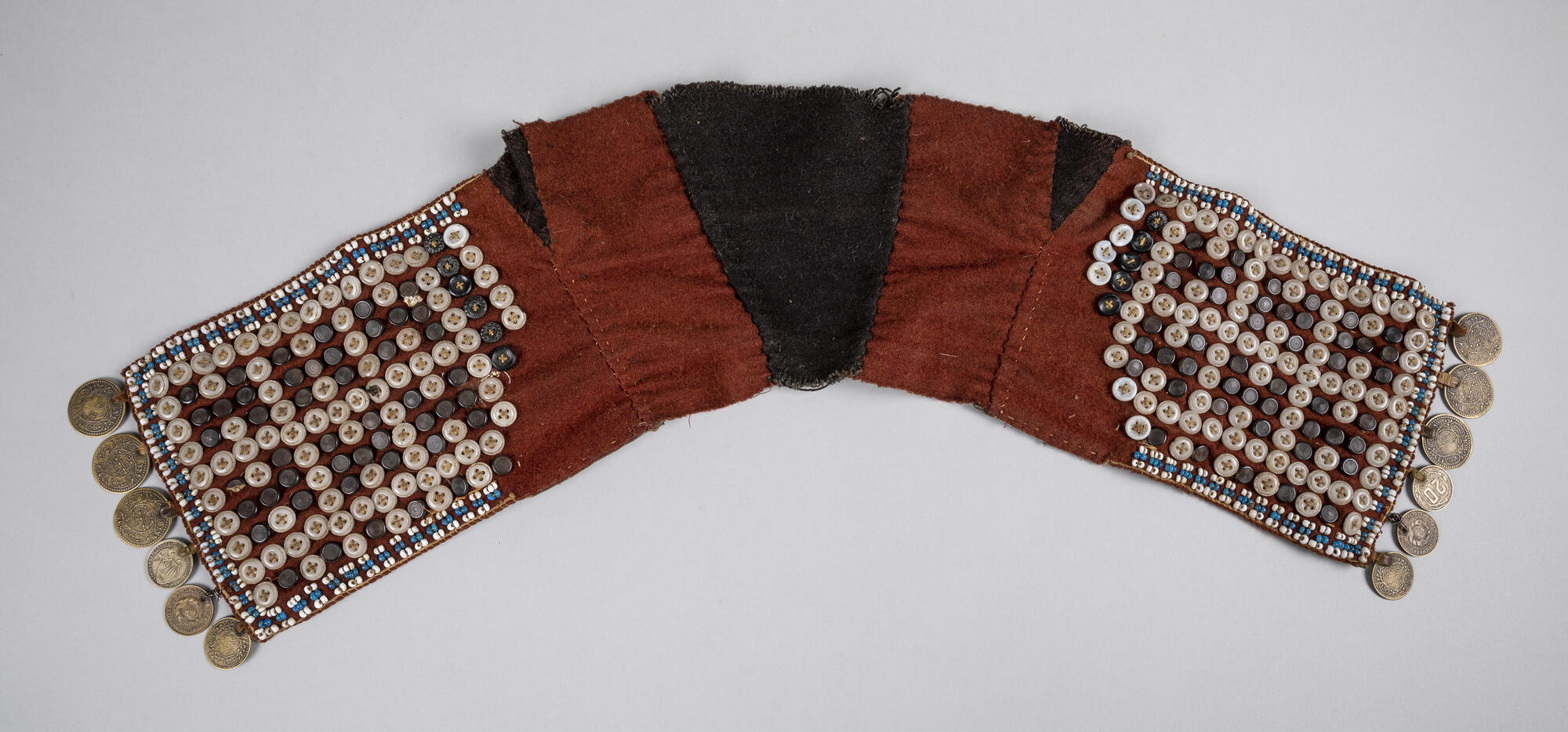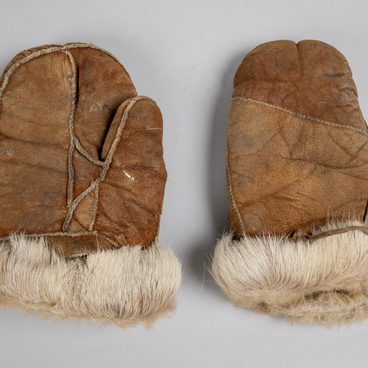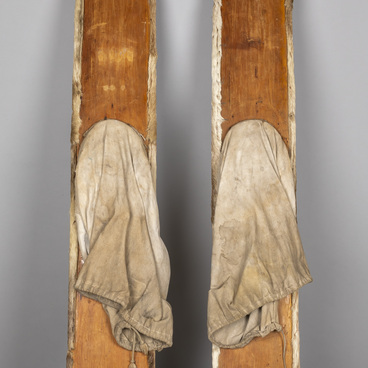A Khanty collar is a part of a women’s coat. It was sewn separately and attached to the finished sak coat but not too firmly, so that, if needed, one could quickly remove the collar and put it on another sak coat.
Collars and hem edges were originally sewn from masterfully assembled pieces of fur from fox paws, sable or squirrel tails, and cloth. The collar is a characteristic element of the traditional attire of the eastern Khanty, which includes the Surgut and Yugan regions.
Only women made clothing. During long winter evenings, they sewed clothes for the whole family. The clothes featured white, red, green, yellow and blue colors. Each color is assigned a particular meaning: white is the color of snow, red symbolizes life, yellow represents fire, green stands for the taiga, and blue is the color of rivers, water, and the sky.
Khanty believed that while sewing the woman sews her thoughts into the seams and patterns, so she should only think about good things during this process.
Khanty also believed that the clothes are ready only when they are decorated with patterns. Women’s beaded jewelry was particularly widespread among the Khanty people.
In addition to traditional beaded decorations, collars often featured buttons and metal patches. On the banks of all the rivers and in each Khanty clan there was a preferred set of colors and materials which were used for making and decorating clothes. Furthermore, there were also patterns that had a unique “language” to them and could communicate a lot of information about their owner. These collars, and beaded stripes could be exchanged for other products, donated, or inherited.
Even now, Yugan River Khanty still wear collars. They are decorated mainly with beads. Collars with metal patches and buttons can now be seen only in museums.
In her book “Khanty and Mansi: a Look from the 21st Century”, Zoya Petrovna Sokolova states that





